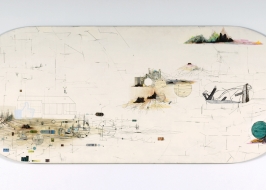This Will Make You Better"Medicine and Medication in Contemporary Art"The Nancy and Stephen Grand Israel National Center for Personalized Medicine (G-INCPM)1
“This will make you better.” This promise was made by healers of the ancient world (Egypt and Assyria, for example), in which diseases and their cures were tied to the stars, spirits and witchcraft, as well as in our day, in which we are moving toward personalized medicine based on a deep understanding of the mix of genetic, metabolic and psychological components to disease.
The medical profession has undergone far-reaching changes over the course of human history. The original healers were shamans and magicians; then there were philosophers and priests; today we have those who conduct biomedical research and apply it. The average lifespan has risen in the past century, from 33 years in the Stone Age, to 48 in the Roman Empire, 65 in the mid-20th century and 83 in the first decade of the 21st. In some countries, the average lifespan is already approaching 90.
But one thing remains the same: The suffering that comes with illness and the profound need of the patient to believe that “this will make it better.” So one goes to the doctor – maybe a specialist who, still today, holds arcane knowledge that is hidden from most humans. This doctor will diagnose the problem, and solve it using the wealth of information at his command. If, in the past, it was possible to prescribe a treatment based on reported symptoms and the doctor’s experience with these things, in the not-too-distant future, treatments will be based on a test and careful analysis of the patient’s DNA. But patient’s trust in his or her doctor – the hope that the problems will find a solution – goes all the way back to the Stone Age.
In this exhibit, several artists from Israel and England reveal their insight into the interface every person erects in order to interact with the sphere of medicine. Eric Bokobza, who trained as a pharmacist, starts out with the chemical formulas for drugs, which he then ties to a physical place – Jerusalem. Tamar Sheaffer inserts whole worlds into capsules. Susie Freeman creates a weave of white pain using the packaging from pain killers. Iris Irisya Kovalio chooses to paint on drug packages. These are joined by two doctors, Dr. Emi Schufman and Dr. Yoram Talmon, whose paintings are influenced by their profession, one the one hand, and which reveal a need to be released from the burden of their patient’s pain, on the other.
Yivsam Azgad and Sigal Meilin













